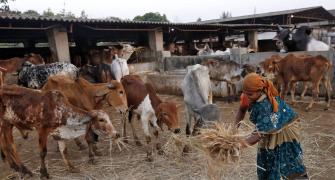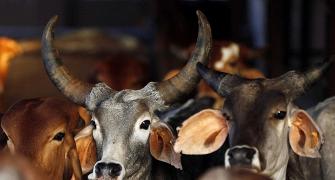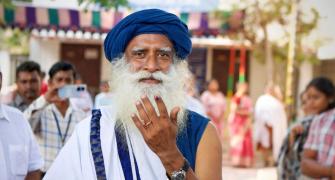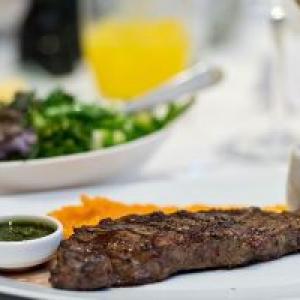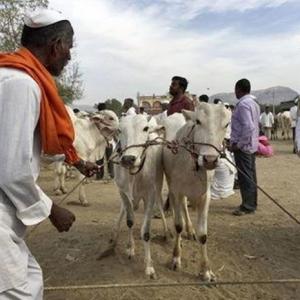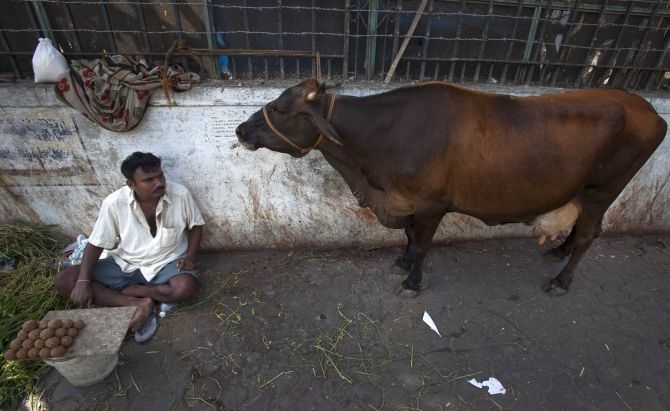
Deepak Lal looks into the economic origins of cow slaughter bans and their questionable utility
In the mid-1960s I and a group of friends from Oxford rented a house from Robert Graves, the poet and resident icon in the village of Deya in Majorca.
During one of his frequent evening soirees, he had us riveted describing his search for a hallucinogenic mushroom that he thought was the source of the drug soma used by the ancient Brahmins.
He believed that these mushrooms were to be found in the dung of the Bos Indicus, which explained why Indian cows were sacred!
Unconvinced by this, many years later I was to provide my own economic explanation for the sacred cow in The Hindu Equilibrium.
The first task was to show, on the basis of contemporary Indian livestock surveys, that contemporary Hindu attitudes to cows were not uneconomic by examining whether the stock and sex distribution of livestock could be shown to be determined by simple economic models.
This turns out to be the case.
For the observed sex ratios of the bovine populations (defined as males per 100 females), and their changes between ages 0-3+ years, there is a simple explanation.
These sex ratios are slightly above unity at ages 0-1, then fall dramatically from ages 1-3, and remain steady and higher from age 3+.
This pattern is determined by the different economic functions of cows and bulls.
The latter are mainly required for traction and ploughing.
Given the expected number of deaths of bulls, and the numbers required to maintain the steady-state stock of bulls for given land resources and cropping patterns, the surplus infant bulls will be culled, with the intermediate sex ratio declining.
Cows are required for milk and as producer goods for breeding cows and bulls for the future.
Nature determines the sex ratio at age 0-1.
As there is a random element in the efficiency of particular cows as breeders, only when they are teenagers will this be known.
The non-breeders will then be culled, leading to a rising sex ratio.
Thus, the Hindus have been culling their bovine population to maintain an ‘optimum’ stock for millennia.
But, given the ban on cow slaughter, this culling was done through slow starvation, which as V M Dandekar argued powerfully is uneconomic as compared to slaughter.
(“Problem of numbers in cattle development”, Economic Weekly 16, 5-7, 1964).
He wrote: “The carcass of a healthy and well fed animal has many uses and is thus of much economic value.
The same animal put through a long process of starvation eats up much of its economic value and finally leaves behind a carcass with nothing but bones and much inferior hide.”
But, though uneconomic today, would a ban on cow slaughter have been irrational for the ancient Hindus? It needs to be noted that this ban evolved gradually during Vedic times (see N M Brown, “The sanctity of the cow in Hinduism”, Economic Weekly 16, 5-7. 1964).
There is no absolute prohibition on cow slaughter in the early Vedic literature, nor in the Manu Smriti or the Arthashastra.
It was not till the later Puranas were written (probably reflecting conditions about the fifth and sixth centuries AD) that bans on cow slaughter became firmly established as part of the Hindu moral code.
D D Kosambi (The Culture and Civilization of Ancient India in Historical Outline, 1981) argues that, once private property in land and livestock had been established, the common practice in the early Gangetic settlements of requisitioning cattle without payment by feuding warriors, for the Vedic Yagna fire sacrifice, became uneconomic.
The later Hindu ban on cow slaughter and beef-eating drove this predatory behaviour of the upper castes out of fashion.
The lower castes did eat dead cattle. Which was their charge for the ‘free disposal’ of dead cattle.
So what needs to be explained is the emergence of the ban on cow slaughter and beef-eating among the cattle-owning upper castes in the late Vedic period.
During the periodic droughts and famines in India it would be rational for an individual farmer to sell or eat his cow to ward off starvation -- but there were external diseconomies which made it socially harmful.
Given the relative autarky of the ancient Indian village communities, the supply of cattle, particularly draught animals, would be dependent on local supply -- particularly upon the number of cows, the ‘mother machines’ to produce cattle.
Thus, any depletion at the village level would hamper the long-term levels of living of the community, making it more difficult to build up the optimal level of bovines.
A reduction in the number of cows from the steady-state level would be equivalent to a destruction of part of the steady-state capital stock.
With the onset of the famine, each individual knows he has a finite probability of starving to death, which he can stave off by killing his cattle.
With non-cooperation amongst individuals they will be faced by the classic Prisoners Dilemma.
Both will end up killing their cows, with disastrous effects on the post-drought cattle stock and hence on future levels of living.
A cooperative solution, where both eschew killing their cows, would be beneficial for both.
But, given the political anarchy of ancient India, this could not be enforced by a central government.
It could, however, be attained by an internalised social or moral code.
This would have to ban cow slaughter at all times and not just during famines to avoid cheating (moral hazard).
It would also be strengthened by a ban on eating beef, leading to an in-built abhorrence of the flesh of bovines.
For, faced with the pangs of hunger during a drought, only a Ulysses tied to the mast by his natural abhorrence of beef could survive the song of the Sirens to kill his cow!
Moreover, if on account of long climatic cycles the frequency of drought had increased between the Vedic and post-Vedic period, it would explain the gradual emergence of the ban in the later period.
This materialist explanation shows that, in terms of the distinction elaborated in my Unintended Consequences, the ban on cow slaughter and beef eating is part of the material beliefs (on how to make a living) rather than the cosmological beliefs (on how to live) -- like that in reincarnation and karma -- of Hindu civilisation.
With the material environment having changed drastically, not least by the implementation of the Indian Famine Code by the British Raj in the 19th century, there is no longer a rational economic reason for the bans on cow slaughter and beef eating, for which so many are agitating in the country today.
Image: A streetside vendor, sits on the pavement next to his cow outside a temple. Photograph: Vivek Prakash/Reuters


